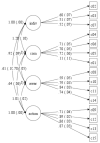Community Intervention Self-Efficacy Scale for Parent Leaders (CONNECTED): Parents' Empowerment to Prevent Adolescent Alcohol Use
- PMID: 32635433
- PMCID: PMC7370010
- DOI: 10.3390/ijerph17134812
Community Intervention Self-Efficacy Scale for Parent Leaders (CONNECTED): Parents' Empowerment to Prevent Adolescent Alcohol Use
Abstract
Empowering parents by actively engaging them in environmental prevention strategies is a promising approach that only a few programs use. Evidence suggests that when families and the wider community are engaged, alcohol prevention is more efficient. However, due to the novelty of this approach, no specific assessment tools for measuring this type of engagement are available. The objective of this study is to design a parental empowerment measurement tool to evaluate parents' self-efficacy when engaging in environmental and community actions and to analyze its psychometric properties. A total of 132 parents active in in-school parent associations from Spain (n = 77; 58.4%) and Portugal (n = 55; 41.7%) completed a pencil and paper battery of four questionnaires, including the developed scale COmmuNity iNtervention SElf-Efficacy SCale for ParenT LEaDers (CONNECTED). The scale showed a good reliability and good test-retest stability in a three-month period. The convergent validity with other well-established instruments that assess similar constructs was significant. A preliminary confirmatory factor analysis (CFA) showed an acceptable fit. Environmental prevention supported by families is a promising preventive strategy because the participation and involvement of families is an effective way to address some risks in adolescence; however, new assessment tools are needed in this field. The developed scale could be a first step to identify the areas of need in a community and to monitor the progress and evaluate the outcomes of the preventive interventions implemented.
Keywords: assessment; community participation; empowerment; environment; family; leadership; parents.
Conflict of interest statement
The authors declare no conflict of interest.
Figures

References
-
- Foxcroft D. Informational Interventions: A Novel Prevention Taxonomy to Better Organise and Understand Substance Misuse Prevention. ADDICTA. 2014;1:66–78. doi: 10.15805/addicta.2014.1.2.027. - DOI
-
- World Health Organization . Health Promotion Glossary. World Health Organization; 1998. [(accessed on 1 May 2020)]. Available online: https://www.who.int/healthpromotion/about/HPR%20Glossary%201998.pdf?ua=1.
-
- Wallerstein N. What is the Evidence on Effectiveness of Empowerment to Improve Health? WHO, Regional Office for Europe; Copenhagen, Denmark: 2006. [(accessed on 1 May 2020)]. Available online: http://www.euro.who.int/__data/assets/pdf_file/0010/74656/E88086.pdf acc....
-
- Zimmerman M.A. Empowerment theory: Psychological, organizational, and community levels of analysis. In: Rappaport J., Seidman E., editors. Handbook of Community Psychology. Plenum; New York, NY, USA: 2000. pp. 43–63.
Publication types
MeSH terms
LinkOut - more resources
Full Text Sources

